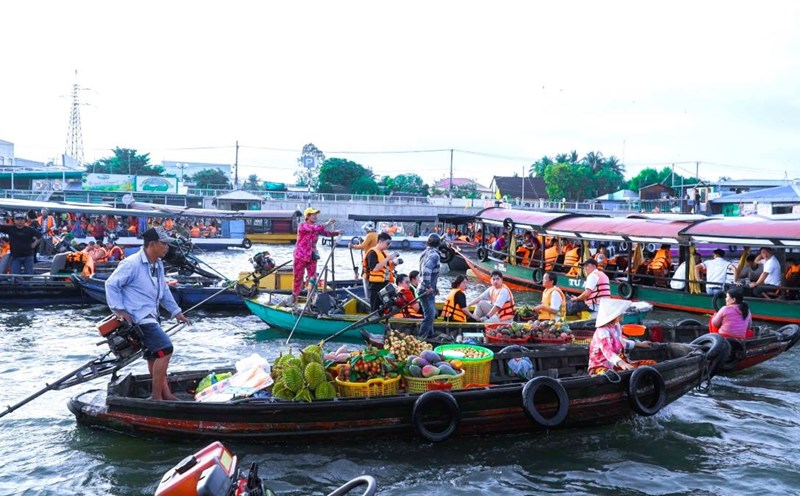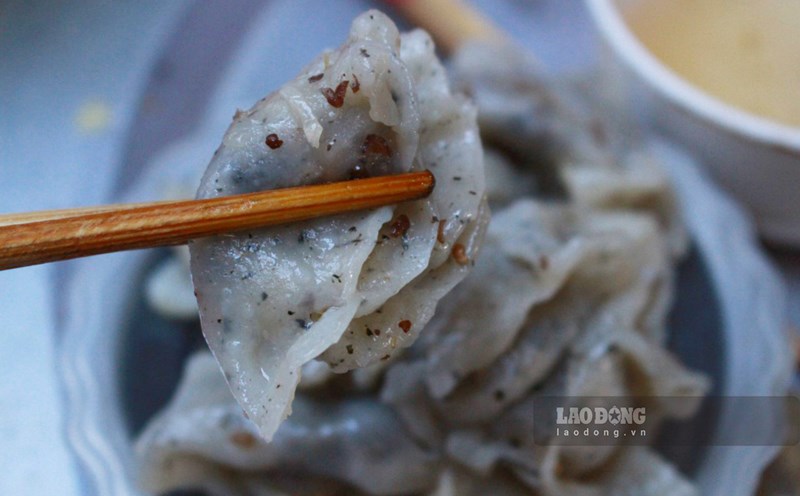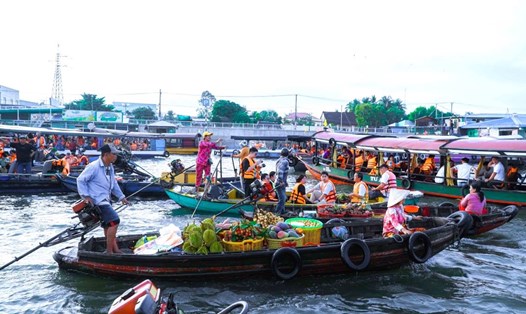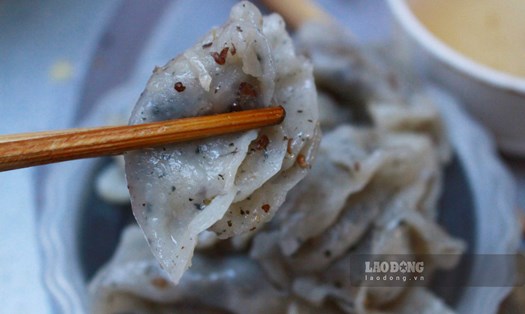Vietnamese people have a rich spiritual life. We can both respect those who "walk in smoke, speak in mist" by telling each other to "respect children and far away", so we should only stand far away and pay respects, and not come close. But we can also live close to or between the spaces of the underworld.
Even in the capital Hanoi, there are so many overlapping yin and yang spaces like that. Cemeteries are located in the middle of modern new urban areas, high-class apartment buildings for the upper class have "graveyard" views, and graves are located next to the tube houses of the village and city.
That is not new, but it has appeared for a long time and is "innocent". Am Phu Market is such a space, containing all the mystery, magic, mourning, sadness, bitterness, venom, and the pomp and sophistication of Hanoi - Ke Cho and Thang Long. - No more non-battlefields.
In the past 100 years, many incidents of "mulberry fields" have appeared on this street/alley. It is a branch of the headquarters that the French colonialists built in Hanoi when they invaded Vietnam, turning this into a new, modern French district completely opposite and separate from the old quarter and the old quarter. citadel.
During the French colonial period, this street was named Rue Simoni, the name of a French official who once held the position of Governor of Tonkin (1909 - 1912). It connects Ly Thuong Kiet and Hai Ba Trung streets, located next to the court area and the prison (currently the court is still the Hanoi People's Court, and the prison has become the Hoa Lo Prison Historical Relic). Since 1945, the street name was changed to Le Chan.
Because it is located in the middle of important buildings of the colonial government in Hanoi, there are absolutely no houses on this street. Streets without houses are an interesting feature of Hanoi. They are just streets, with traffic functions and are exempt from residence for security or political reasons.
This emptiness is the reason why the city government under the Japanese ousting the French built a row of floating shelters along the street to avoid Allied aircraft bombing the Japanese fascists. But this shelter changed the character of the street because after the bomb threat ended, it became a temporary market place.
On December 19, 1946, President Ho Chi Minh issued a call for nationwide resistance. Fierce fighting broke out between us and the French enemy. Hanoi is divided into two areas: One controlled by us, the other occupied by France. When war broke out, the bodies of soldiers and people were carefully buried.
The bodies in the French occupied area - mainly victims of Hang Bong and Cua Nam streets - were moved to Le Chan street and taken to a series of underground shelters. During the war, the corpses of soldiers and people filled the tunnels, and the French army poured soil to form a common grave.
After 1954, the Hanoi government built a larger, higher tomb and on the gate had the words: Tomb of the people and soldiers who sacrificed on the National Resistance Day - December 19, 1946. In 1981, Hanoi organized an exhumation and transferred the remains to Bat Bat cemetery.
The restored street was named 12-19. Many years later, people flocked here to hold the market. In 1986, Hanoi officially named the market December 19 Market, but people only used to call it Am Phu Market because everyone knew what used to lie under that layer of soil and the mysterious sacredness that lingered. around the wild incense trees here.
There are many strange stories circulating at Am Phu market, such as the story of a cyclo driver who met a woman who asked her to take her back to the market on December 19 at nearly midnight. When he arrived, he saw that the market was closed, and the customer reached into her bag and gave him a 2,000 VND bill. When he woke up, the guest was nowhere to be seen, and the banknote he was holding in his hand turned out to be money from the Underworld.
Therefore, people consider Am Phu market not simply a market but also a spiritual place, borrowing land from people of the underworld to make a living, hoping to bless and bless their business. profit. The beliefs of the people at Am Phu market are closely related to the heroic spirits deposited in this place.
I don't know if it's because of "yin and yang harmony" or not, Am Phu market is very busy, as busy as Hang Da market, Hang Be market or Hom market nearby. Even many small traders from the above markets have chosen Am Phu market as a place of business.
At Am Phu market, there is everything, all kinds of raw and cooked pieces of food from chicken, duck, goose, buffalo, cow, pig, shrimp, crab, fish, snails, frogs, and eels that are still fresh or struggling. from meat stewed with shrimp paste, sausage, roasted meat, roasted bird, fried chicken, and soup. From rice, beans, peanuts and sesame to pickles, tomato and fish sauce, from needles and threads to votive papers and leaves, there is nothing that is missing.
However, what makes Am Phu market attractive as well as its "underworld" reputation is that an item once considered a "national soul" that is now about to be abolished is chopped dog meat. "Wood survival" is the identifying brand of Am Phu market, sold all year round, without any fear on the first day or the beginning of the lunar month.
In my youth's nostalgia, also on the first day of the seventh lunar month, I witnessed a magical scene that was probably about to be erased from public memory. A long row of shiny brown dog meat stalls are controlled with firm cuts of a cleaver on a large, thick wooden chopping board.
Drama, drama, drama... after each cut, a piece of meat with enough skin and lean fat comes out evenly. They are arranged in a large ceramic plate, then placed on a tray covered with banana leaves already arranged with sliced galangal, chili split lengthwise, hand-length dog basil, and a bowl of bubbling pale pink shrimp paste. And a plate of salt and pepper mixed with fresh chili for those who don't eat shrimp paste.
Next to that tight dog cage, a group of men sat side by side, eager to "lower the Western flag", but there was also no shortage of female faces. They sit in empty spaces in the market, in front of "rustic" stalls to create a surreal performance about the animal "eating at the market, sleeping on the street".
Supporting actors came rushing in to buy dogs wrapped in newspaper to take home. Their faces were filled with joy when they received the paper package filled with grease and the characteristic smell of dog meat. Perhaps, there is also the joy of those who once recited the sentence: "Living in this world, eating dog sausages." If you die in the underworld, do you know if it's true or not?
"Wood survival" at Am Phu market mainly comes from Phung village (Hoai Duc), which was once known as a dog meat craft village. The dog is burned with straw in the traditional rustic style, the skin is dark yellow, dry and crispy, not the type of dog meat that is "varnished" with cockroach wing colorant, so it has earned the reputation of "Ha Thanh's best wood survival".
Later, when Am Phu market was wiped out, dog meat sellers moved to Phung Hung street to sell. But then, according to the change in awareness of Hanoians, the dish "moc hoa" and the profession of processing dog meat are also gradually being reduced and eliminated. Perhaps, at some point, the dish of chopped dogs will be just as nostalgic as the Am Phu market.
By the end of 2008, Am Phu market was officially cleared. On the old market floor, the roads and sidewalks are paved with Thanh Hoa green, on both sides are rows of small kiosks selling books. Because after a lot of discussion and debate, the shopping center project was agreed to be converted into a street.
After completing the project "December 19 Street and Flower Garden", Street 19-12 broke the record for streets with no house numbers of Hoa Lo Street, Hanoi. If Hoa Lo Street still has a single house - Hoa Lo Prison Historical Relic that opens to the street, then December 19 Street is even more special in that this is the only street that does not have a door opening to the street. .
Even though the function, status and image of this street, alley, and market have changed due to historical changes, this place is still green with the green of a few remaining wildflower trees. Crushing a green leaf, a strong, wild scent rises up like a bit of incense lighting the Am Phu market of a bygone era.








